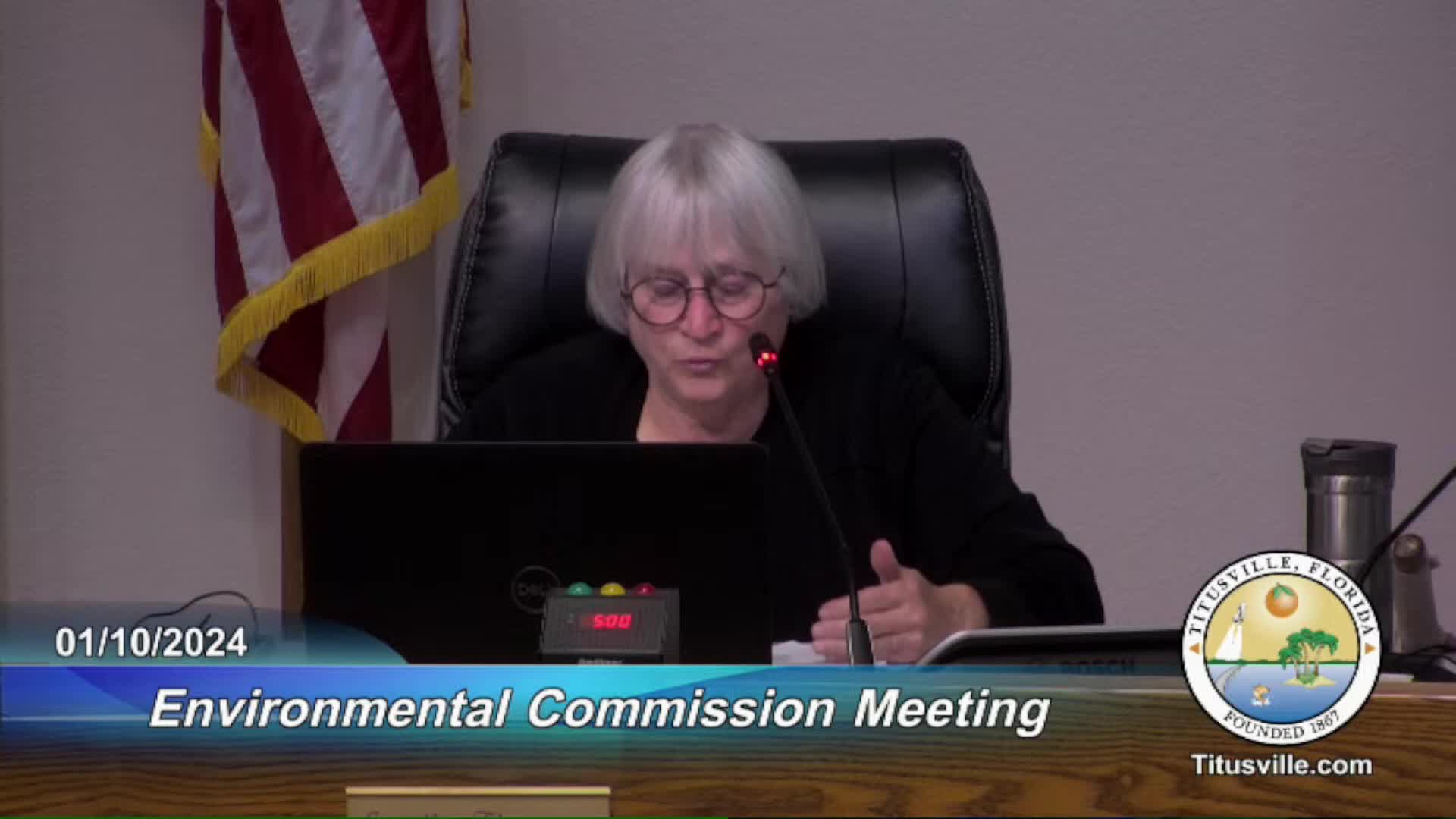Brevard Council Debates Inclusion of Keystone Species in Native Plant Ordinance
January 11, 2024 | Titusville, Brevard County, Florida

This article was created by AI summarizing key points discussed. AI makes mistakes, so for full details and context, please refer to the video of the full meeting. Please report any errors so we can fix them. Report an error »

In the heart of Titusville, the Environmental Commission convened on January 10, 2024, to discuss a pivotal ordinance aimed at enhancing local biodiversity through the incorporation of native plant species. The meeting buzzed with passionate dialogue as members debated the inclusion of keystone species—plants essential for maintaining ecological balance.
One member raised a crucial point, noting that while the current ordinance includes a variety of native plants, it fails to encompass all 101 keystone species identified for the region. “Only 15 of the keystone species were listed,” they emphasized, highlighting a significant oversight in the proposed legislation. This prompted a call for a more comprehensive approach that would integrate all native species, thereby ensuring the health of local ecosystems.
The discussion revealed a divide among members regarding the scope of the ordinance. Some advocated for a focused list that would prioritize keystone species, while others argued for a broader inclusion of all native plants, which number over 1,300 in Florida. “If we include all the natives, we will also cover the keystone species,” one member pointed out, suggesting that a wider net could ultimately benefit the environment.
As the conversation unfolded, the importance of native plants in supporting local wildlife became a central theme. Members expressed a shared belief that prioritizing native species is crucial for the health of the community, as these plants are better suited to thrive in the local climate and support native pollinators like birds and butterflies.
The meeting concluded with a motion to amend the ordinance to ensure that all native species compatible with the local zones are included, alongside the keystone species. This decision reflects a growing recognition of the need for sustainable practices that not only beautify the landscape but also foster a thriving ecosystem.
As Titusville moves forward with this ordinance, the implications for local biodiversity and community health are profound. The commitment to native plants signals a step towards a greener future, one where the natural beauty of Florida can flourish alongside its diverse wildlife.
One member raised a crucial point, noting that while the current ordinance includes a variety of native plants, it fails to encompass all 101 keystone species identified for the region. “Only 15 of the keystone species were listed,” they emphasized, highlighting a significant oversight in the proposed legislation. This prompted a call for a more comprehensive approach that would integrate all native species, thereby ensuring the health of local ecosystems.
The discussion revealed a divide among members regarding the scope of the ordinance. Some advocated for a focused list that would prioritize keystone species, while others argued for a broader inclusion of all native plants, which number over 1,300 in Florida. “If we include all the natives, we will also cover the keystone species,” one member pointed out, suggesting that a wider net could ultimately benefit the environment.
As the conversation unfolded, the importance of native plants in supporting local wildlife became a central theme. Members expressed a shared belief that prioritizing native species is crucial for the health of the community, as these plants are better suited to thrive in the local climate and support native pollinators like birds and butterflies.
The meeting concluded with a motion to amend the ordinance to ensure that all native species compatible with the local zones are included, alongside the keystone species. This decision reflects a growing recognition of the need for sustainable practices that not only beautify the landscape but also foster a thriving ecosystem.
As Titusville moves forward with this ordinance, the implications for local biodiversity and community health are profound. The commitment to native plants signals a step towards a greener future, one where the natural beauty of Florida can flourish alongside its diverse wildlife.
View full meeting
This article is based on a recent meeting—watch the full video and explore the complete transcript for deeper insights into the discussion.
View full meeting